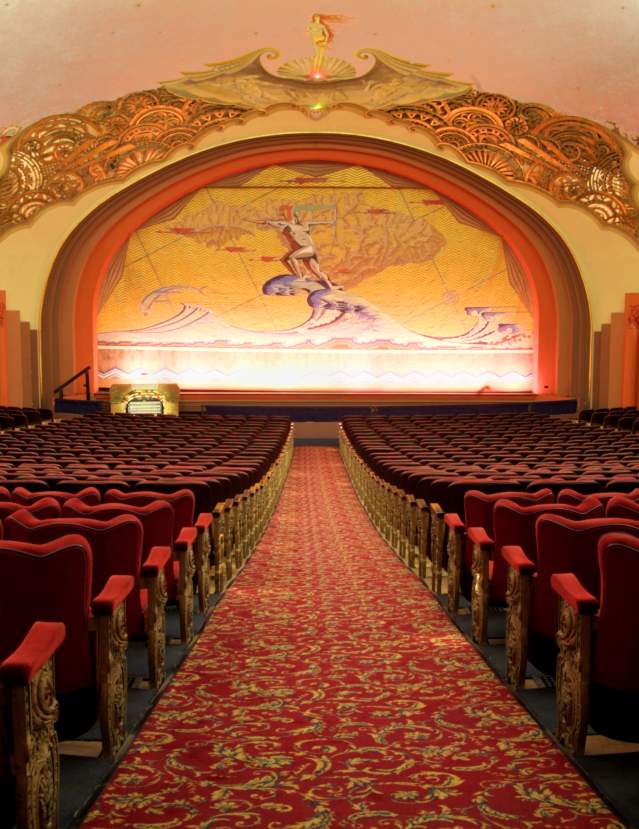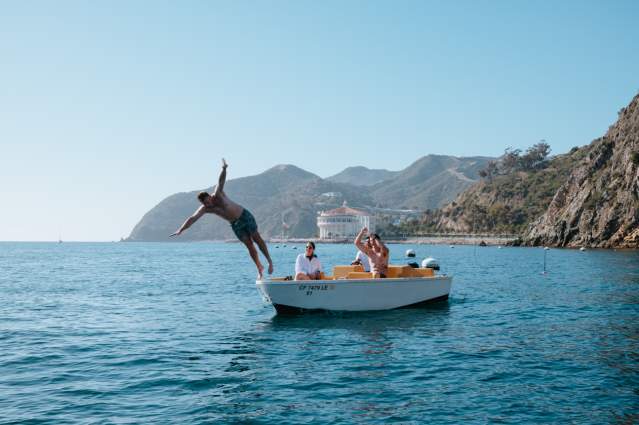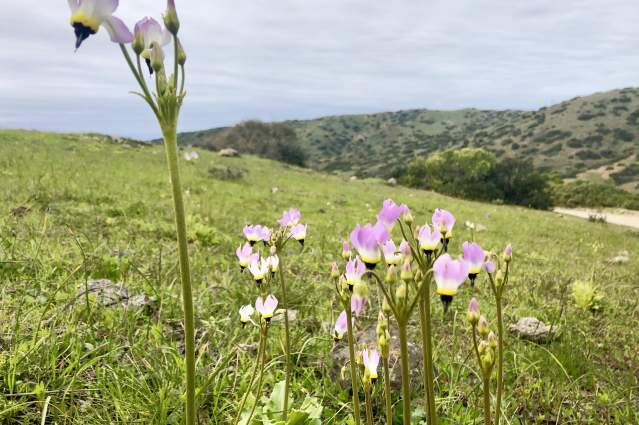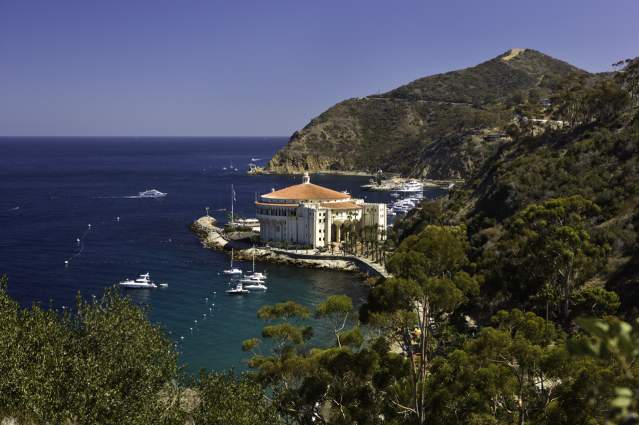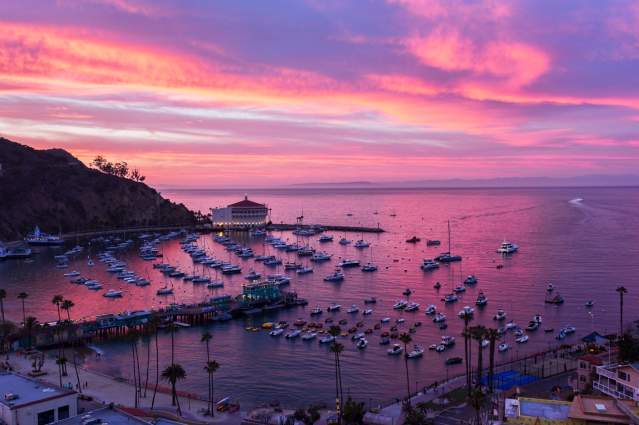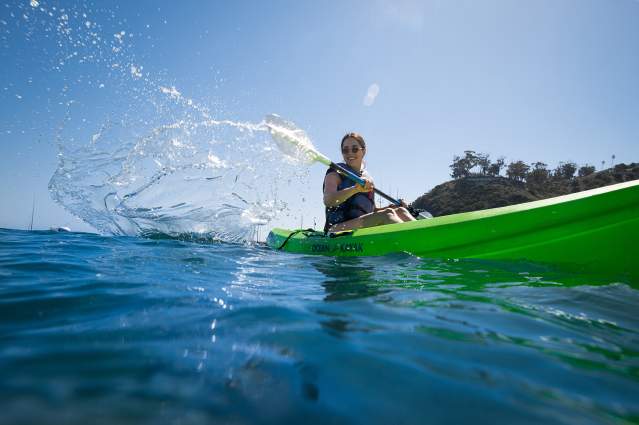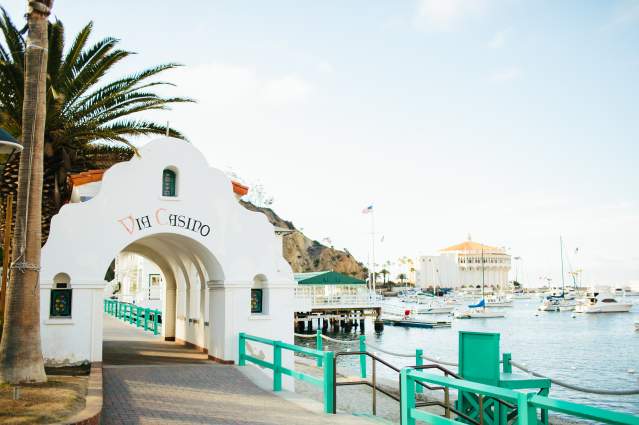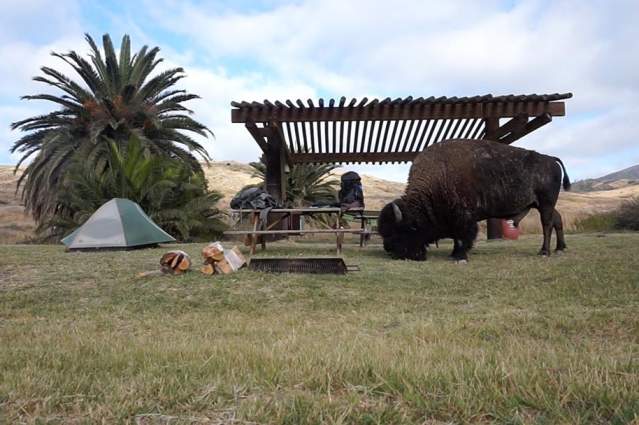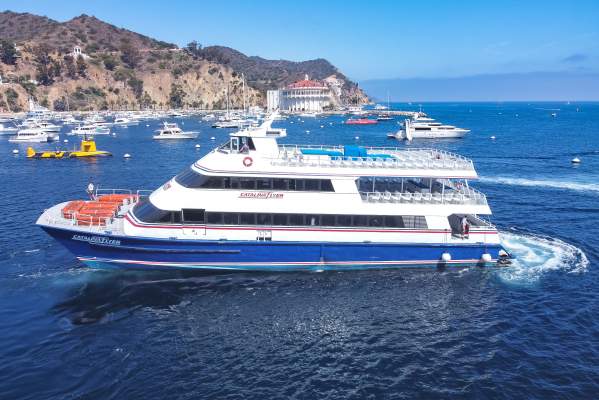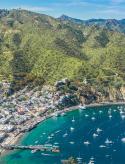Catalina Island’s Hollywood History
Catalina Island has served as the location for the filming of over 500 motion pictures, documentaries, television programs and commercials over the past 90 years. Of those 500, approximately 300 were motion picture productions. Beginning as early as 1911 and continuing with great momentum through the silent film era and the introduction of sound to motion pictures, Catalina Island served as location for more than 225 films.
Throughout this history, Catalina Island has been transformed into the coast of North Africa, from Tahiti to the American Frontier and back again. It has been mistaken for the lost continent of Atlantis and the home of that famous mechanical shark, Jaws. In short, Santa Catalina Island holds a unique place in the history of motion picture production as Hollywood’s exotic back lot.
During the 16 years of silent-film production, many notable directors and actors frequented the Island and produced several classic films, such as Treasure Island (1918), Male & Female (1919), Ten Commandments (1923), Ben Hur (1925), Old Ironsides (1926) and The Black Pirate (1926). D.W. Griffith was one of the first directors to film on the Island. His feature Man’s Genesis was filmed on Catalina Island in 1912. Many of the large studios followed Griffith’s lead and began utilizing the Island as the backdrop of their films. Universal Studios, Lasky Film Corporation, Paramount, Fox, Metro-Goldwyn, and United Artists were among the many production companies.
One may wonder why so many production companies flocked to Catalina Island during this period and the answer is quite simple. Catalina Island’s unique natural beauty and accessibility were the major factors. Production crews and sets could be sent to the Island by barge and the vast, untouched mountains and beaches could be transformed into almost any place in the world.
Catalina Island truly could be transformed. In watching many of the movies filmed on Catalina Island, it takes a keen eye to recognize the locations and pinpoint exactly where a scene was shot as movies have been filmed all over the Island. Avalon, Little Harbor and the Isthmus (Two Harbors) were the most common locations used for many of the films. In fact, so many movies were filmed at the Isthmus that it came to be known as the Isthmus Movie Colony. One can stroll around Two Harbors today and imagine tall ships at battle in Catalina Harbor or the Tahitian Village constructed for the filming of Mutiny on the Bounty. In fact, the film production companies planted many of the non-native palm trees found at the Isthmus today.
Another interesting and lasting impression of this unique history was the introduction of the North American Bison to Catalina Island. The bison were brought to Catalina Island for the production of The Vanishing American, the film version of Zane Grey’s classic novel, released by the Lasky Film Corporation in 1925. However, in watching the film it appears that it was not filmed on Catalina Island. Perhaps the Island scenes ended up on the cutting room floor, but nonetheless a herd of North American Bison has been roaming the hills of Catalina since December of 1924.
The introduction of sound to motion pictures ushered in a new era of film production for Hollywood and Catalina Island. The Island continued to be a prime location for many of Hollywood’s best filmmakers. One of the first “talkie” movies filmed on the Island was Condemned starring Ronald Colman in 1929. The following years saw such classic films as Island of Lost Souls (1932), Rain (1932), Treasure Island (1933), Captain Blood (1935), and Captains Courageous (1937) being filmed on the Island. The frequency of filming on Catalina Island during this period introduced several of Hollywood’s screen favorites to the charms of Santa Catalina.
Celebrity Sightings
Many famous actors and celebrities were spotted on Catalina Island and off the coast in their palatial yachts. The Hotel St. Catherine ran a weekly column in the local newspaper called “Lobbying at the Hotel St.Catherine.” Each week, Harry Grattan, proprietor of the St. Catherine’s gift shop, would report his celebrity sightings. Charlie Chaplin, Joan Crawford, Clark Gable, Joe Schenck, Betty Grable, Norma Shearer, Irving Thalberg, Richard Arlen and Johnny Weismuller were all frequent visitors.
Many celebrities and actors worked and played on Catalina Island during the 1930s. Some developed life-long love affairs with the Island and its surrounding waters. Charlie Chaplin and his wife Paulette Goddard were frequent visitors and loved angling for marlin and tuna around the Island. James Cagney and his wife were known to anchor their yacht Marian in Descanso Bay. Cecil B. De Mille, a prominent film director who filmed at least three pictures on Catalina Island was quoted in The Catalina Islander as saying that Catalina is “the only place where I can get away to work amid real inspiration.”
World War II
The onset of World War II changed life on Catalina Island and in Hollywood significantly. Catalina Island was closed to tourism and the use of the Island for filming was suspended. After World War II filming picked up again, although as aviation technology flourished in the private sector, it became easier to travel to an exotic locale rather than recreate it on Catalina Island. As a result, the use of the Island for motion picture productions decreased. This was not the end of filming on Catalina Island, though. The 1950s ushered in the world of television and a host of new producers and directors discovered the Island once again as an exotic, yet convenient location. Since 1950, hundreds of commercials, television programs and music videos have been shot on Catalina Island, as well as countless catalogs and magazine shoots.
Although the film industry’s use of Catalina Island has slowed, it certainly has not stopped. Many memorable productions have been filmed on the Island in the last fifty years, including The Glassbottom Boat (1966), Rosemary’s Baby (1968), Chinatown (1974), Jaws (1974), MacArthur (1977), Waterworld (1995), Multiplicity (1995), Apollo 13 (1995), and Amistad (1997). There are many other movies such as The Hunt for Red October (1990), Suicide Kings (1997) and The Thin Red Line (1998) that were partially filmed off the coast of Catalina Island as well. As a moviegoer, every once in a while you can catch a glimpse of Catalina on the horizon like in Step Brothers (2008) which also used aerial shots of Catalina Island as featured in Disney’s Pearl Harbor (2001).
Catalina Island has had a unique relationship with Hollywood’s filmmakers for almost a century. The Island has been immortalized on the silver screen hundreds of times and been transformed into a variety of locales. Today, she awaits the next cast and crew that will add another production to the already long list of memorable movies filmed on her shores.
Complete list of movies filmed on Catalina Island.
In honor of Catalina Island’s Hollywood history roots, two film events occur each year. The Catalina Island Museum for Art & History hosts the Silent Film Benefit each year in May where they present a silent film accompanied by live music. The four-day Catalina Film Festival occurs in September each year.
Interested in filming on Catalina? We have a Catalina Film and Photoshoot Handbook.
Catalina Flyer from Newport
$10 Off Catalina Island Ferry
Hop onboard the Catalina Flyer for daily ferry service from Newport Beach to Avalon, Catalina Island in just over 1 hour.
Catalina Sea Spa
Recharge with massages starting at $110.
Discover Bliss at Catalina Sea Spa! Book online or call 310-510-8920. Treat yourself and escape to relaxation today!
